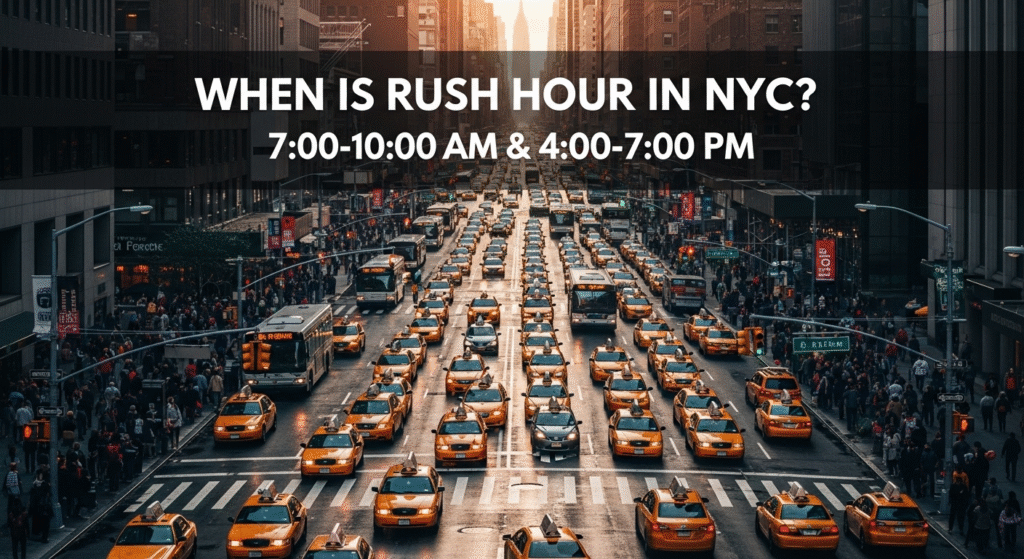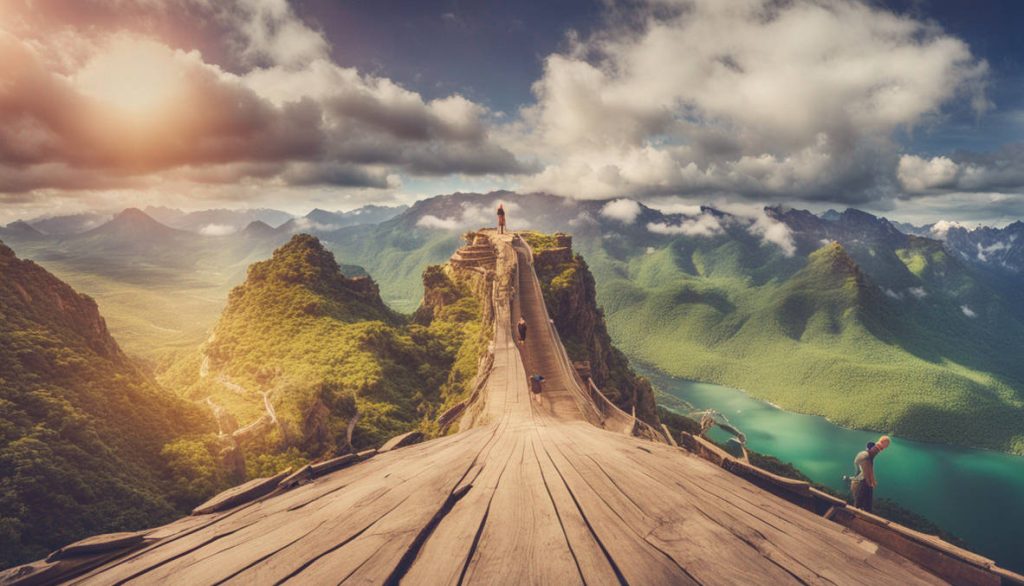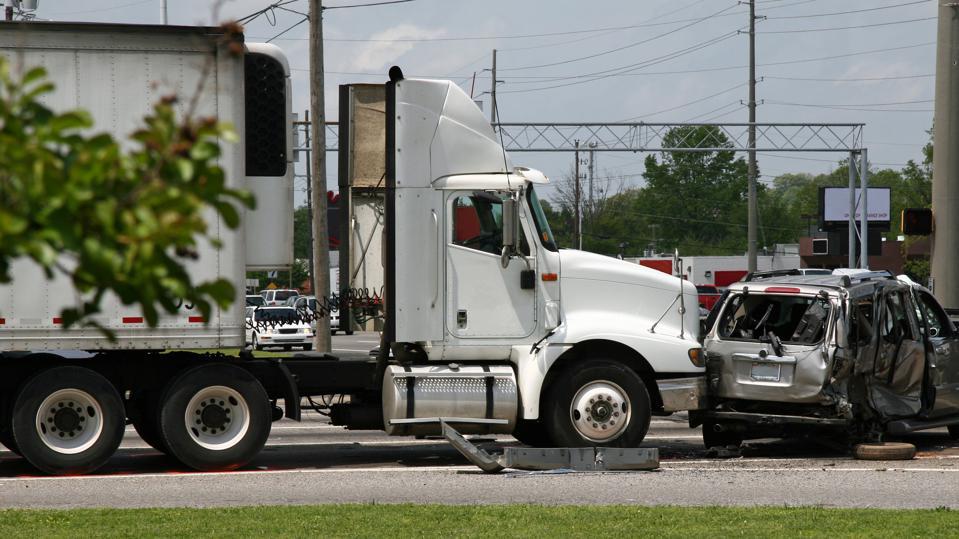Understanding NYC Rush Hour Timings
New York City’s rush hour is a dynamic period influenced by millions of commuters heading to and from work. While there are general patterns, it’s helpful to think of rush hour not as a fixed time, but as a window of peak congestion.
Morning Rush Hour
The morning rush hour is when the city truly wakes up. Commuters from the five boroughs, as well as from New Jersey, Connecticut, and Long Island, pour into Manhattan’s central business districts.
- Peak Commute Window: Generally, the morning rush hour NYC runs from 7:00 AM to 10:00 AM on weekdays.
- The Busiest Period: The most intense traffic, both on the roads and on public transit, typically occurs between 8:00 AM and 9:30 AM. During this time, subway platforms are crowded, and major bridges and tunnels experience significant delays.
If you’re driving into Manhattan, arteries like the Long Island Expressway (LIE), the Brooklyn-Queens Expressway (BQE), and the major tunnels (Lincoln, Holland) and bridges (George Washington, Triborough) will be heavily congested.
Evening Rush Hour
The evening rush hour mirrors the morning commute, but in reverse. As the workday ends, people begin their journey home, creating a second wave of peak travel.
- Peak Commute Window: The evening rush hour typically spans from 4:00 PM to 7:00 PM on weekdays.
- The Busiest Period: The heaviest congestion usually happens between 5:00 PM and 6:30 PM. This is when you’ll see the largest crowds on subway platforms and the longest lines of traffic heading out of Manhattan.
Fridays often have a slightly different pattern. The evening rush can start earlier, sometimes as early as 3:00 PM, as people leave the city for the weekend.
What Influences NYC Traffic Patterns?
Rush hour timings are not set in stone. Several factors can extend these peak periods or cause unexpected congestion at any time of day. Being aware of these can help you better plan your travel.
Day of the Week
Weekday traffic patterns are fairly consistent from Monday to Thursday. As mentioned, Friday afternoons often see an earlier start to the evening rush. Weekends have their own unique traffic flow. While you won’t experience the typical commuter rush, you’ll find heavy traffic around shopping districts, tourist attractions, and major event venues, especially on Saturday afternoons.
Weather Conditions
New York City’s infrastructure is robust, but bad weather can bring it to a crawl.
- Rain: Even a steady drizzle can slow down traffic significantly as drivers become more cautious. It also pushes more people onto public transit, making subways and buses more crowded.
- Snow: A snowstorm can cause major disruptions, leading to severe delays and even shutdowns of roads and public transport services.
- Extreme Heat or Cold: While less impactful on roads, extreme temperatures can cause mechanical issues on subway trains, leading to service delays.
Special Events and Holidays
New York is a city of events. Parades, street fairs, marathons, and concerts can lead to extensive road closures and rerouted public transit. Always check for event schedules if you’re traveling on a weekend or holiday. Major holidays like Thanksgiving and Christmas also create unique travel patterns, with heavy traffic on the days leading up to and following the holiday.
Construction and Accidents
Unplanned incidents are a major source of traffic headaches. A vehicle accident or emergency roadwork can shut down a lane on a major bridge or highway, creating a ripple effect of delays that can last for hours. It’s always a good idea to check a real-time traffic app before you head out.
Tips for Beating NYC Rush Hour
You don’t have to be a victim of rush hour traffic. With a little planning, you can make your journey faster and less stressful.
Travel During Off-Peak Hours: This is the most effective strategy. If your schedule allows, travel before 7:00 AM or after 10:00 AM in the morning. For evening travel, leaving before 4:00 PM or after 7:00 PM will help you avoid the worst of the congestion.
Embrace the Subway, but Wisely: The subway is often the fastest way to get around Manhattan, even during rush hour. However, platforms and trains can be extremely crowded. If possible, try to board at a station at the beginning of a line to increase your chances of getting a seat or at least some standing room. Use an app like MyMTA to check for service changes or delays before you go.
Walk or Bike for Short Distances: If your destination is within a mile or two, walking can be faster (and healthier) than waiting for a taxi or a bus stuck in traffic. NYC’s bike-sharing program, Citi Bike, is another excellent option for short to medium-distance travel, especially with the city’s expanding network of bike lanes.
Use Real-Time Traffic Apps: Technology is your best friend. Apps like Google Maps, Waze, and the city’s own NYC 511 provide up-to-the-minute information on traffic conditions, accidents, and public transit delays. Check your route before you leave and be prepared to take an alternate one if needed.
Consider Ferries: Don’t forget about the water! The NYC Ferry service connects Manhattan with various points in Brooklyn, Queens, and the Bronx. Ferries are rarely affected by road traffic, offer a scenic view of the skyline, and can be a surprisingly quick and pleasant way to commute.
Final Thoughts
Surviving, and even thriving, during NYC rush hour is all about smart planning. By understanding the peak travel windows from 7-10 AM and 4-7 PM and staying aware of the factors that influence traffic, you can navigate the city like a pro. Whether you choose to travel off-peak, master the subway system, or enjoy a ferry ride, you have options to make your journey smoother.



